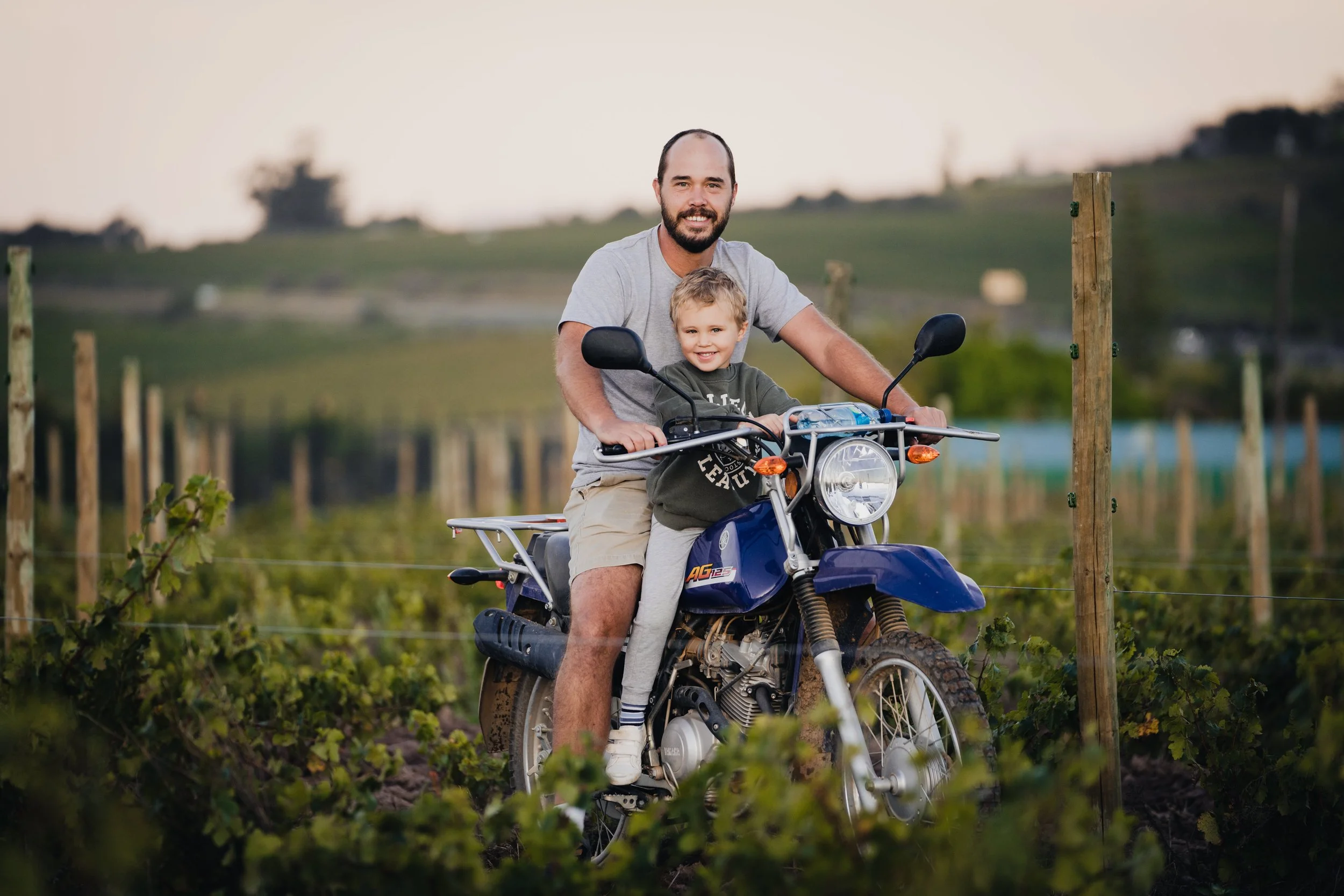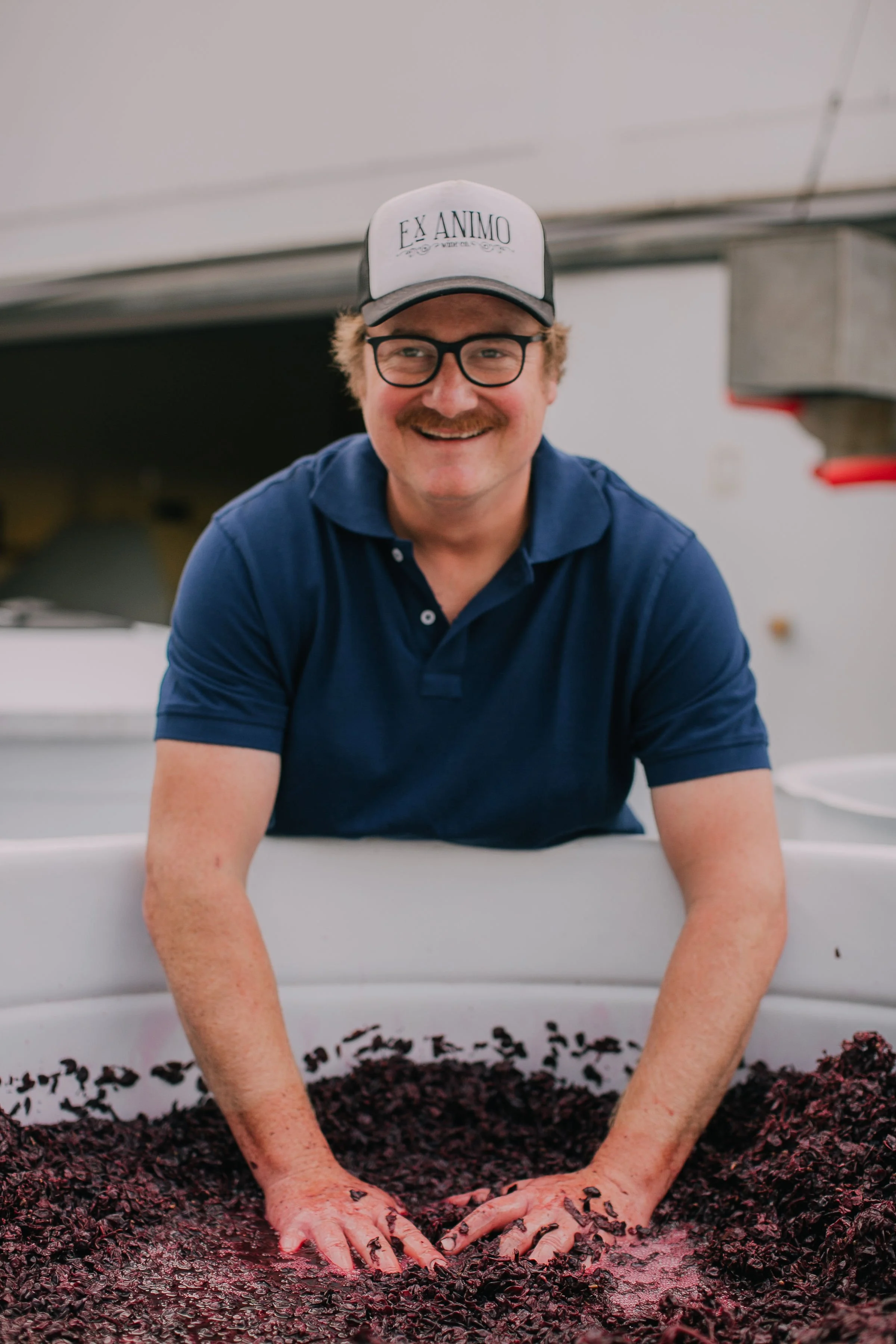The Rebrand of South African Wine: The Story of the Polkadraai Hills
Written by Charlotte Adams Alsaadi, Vine Street Imports
Here goes the usual cliché of South African wine: egregiously oaked Pinotage with hints of burned coffee and overcropped, nondescript Chenin Blanc whose most redeeming quality is its price. But in the past ten to fifteen years, there’s been a subcurrent of change slowly making its way to the forefront of the industry. South African wine is going through a rebrand, with a focus on fresher, lighter, lower intervention styles. First came the Swartland, with its great wine revolution, and today, we’re seeing exciting changes in Stellenbosch, one of South Africa’s oldest and most traditional wine regions. How the industry got there is a nuanced tale that reckons with the country’s political history and grapples with regional rebirth.
From 1948 to 1994, apartheid bled an ugly stain into the fabric of South African heritage. Most of the world reacted to apartheid by placing embargoes on South African trade commodities, including wine. The largest sanctions came around 1985, when the US banned all South African imports, and a year later, when the UK froze all investments in South Africa. Until the end of apartheid in 1994, South African wine production and consumption was almost entirely domestic. While the lifting of trade embargoes caused exports by volume to increase by nearly 25 times in the two decades post-apartheid, it’s no secret that South Africa’s wine industry suffered an enormous loss from a marketing perspective. The country essentially emerged from apartheid at square one; a new image would have to be built.
In their soul-searching pursuit, winemakers looked elsewhere for inspiration. Finally, for the first time in 46 years, they could travel – and travel they did. In a pent-up frenzy, they hemisphere-hopped to places like France, Italy, California, and Australia. They saw the new wave ways in Sonoma, as folks like Pax Mahle embraced fresher, lower alcohol profiles. They went to Margaret River and saw how places like Mosswood were defining their own styles of Bordeaux’s beloved grapes; they would never be the Médoc and there was little use in trying. South African winemakers began to understand that defining regional identity was imperative, and this starts with understanding one’s climate and soil; the copy-paste approach to winemaking would never stack up. Taking a more Old World approach, grapes started to be planted in appropriate climates. Rootstocks and clones were given greater attention. Place became paramount.
Polkadraai Vineyards
At the end of the 2000s, a group of pioneering winemakers – Eben Sadie, Adie Badenhorst, and Chris and Andrea Mullineux to name a few – formed a coalition in South Africa’s Swartland, the large, hot district located about an hour north of Cape Town. They called themselves the Swartland Independent Producers (SIP) and their mission was simple: to put the Swartland on the map by “laying down some guidelines for vineyard and cellar practices that will enhance [the] expression of ‘Swartlandness.’” Many of these winemakers sourced grapes from the Paardeberg, a mountain of decomposed granite in the shape of an outstretched hand, forming long, narrow valleys. The Paardeberg has become synonymous with fresher styles, thanks to more shade, afternoon and evening breezes off the Atlantic Ocean, and those old granitic soils that conjure aromatic wines – plus, of course, producers who valued brightness over unbridled power.
While the Swartland has become known for its trailblazers and new wave wines, Stellenbosch seems to have maintained its image as the more straight-edge, traditional winemaking region. Thanks to a climatic affinity for Cabernet and Chardonnay – as well as being the country’s most well-known hub of winemaking culture and education – Stellenbosch is often called the Napa Valley of South Africa. The full-bodied Cabs and Bordeaux blends are Stellenbosch’s bread and butter, and while clearly defined branding can hardly be a bad thing for the identity of a region, too much tradition can sometimes curtail excitement. Put more bluntly, wine writer and critic Tim James has called Stellenbosch the “dozing, unfashionable giant of the last few decades.” Wine expert Michael Fridjhon postures that Stellenbosch lost its cool factor in the face of the Swartland revolution. “The offering of the Swartland was pretty much the polar opposite of what Stellenbosch aimed to provide. It was less flashy, more craft-oriented, with the sex appeal of old dryland vineyards…” he writes.
Thankfully, to calm Fridjhon’s apparent pessimism, there is a ward within Stellenbosch called the Polkadraai Hills that is breathing new life into this historic region. The Polkadraai Hills are a small range of granitic slopes, ranging from about 200-1300 feet above sea level, that are located just eight miles from False Bay as the crow flies. It is here that a new vanguard of winemakers is leaning into the fresher, brighter, lower alcohol, and less overtly oaky styles that the Paardeberg so fashionably put on the map a decade ago.
Presumably, it is the uniqueness of the topography and soils that first drew growers to this area. The Polkadraai Hills, like the Paardeberg, overlie an eroded granitic pluton. While granite is commonly found throughout Stellenbosch, the decomposed granitic soils of the Polkadraai Hills are unique for their high proportion of intermixed sand. Ocean waters, which are cold enough to necessitate a wetsuit in all seasons, cool overhead winds, and as they sweep onto land, the first protruding geological feature that they hit are the Polkadraai Hills. Sun-drenched vines thus receive a steady blast of afternoon air conditioning, which growers cite as the key for retaining critical acidity.
Lukas van Loggerenberg
If the theme of new wave South Africa is “fresh,” the Polkadraai Hills are a perfect representative of the movement. Winemaker Mick Craven comments, “What we love about the Polka is the delightful saline, mineral core it gives to the wines. It imparts a lovely purity and freshness to the wines which can sometimes be lost in warmer climates like ours.” He goes on to say that the wines have an “almost effortless intensity.” Certainly, this quality can be seen in Reenen Borman’s Sons of Sugarland Syrah (strongly perfumed and peppery with a bright base) or Lukas van Loggerenberg’s Breton Cabernet Franc (brilliantly balancing fruit density, herbaceousness, and acid).
A theme with this rising generation of winemakers is to intervene as little as possible in the cellar. This, of course, is only possible with healthy fruit. (Cue an eye-rolling meme of the hackneyed line “Wine is made in the vineyard.”) Being able to work with little intervention in the cellar is often thanks to a lot of smart, healthy intervention in the vineyard. With the Craven Chenin Blanc, for example, vines are trained as “faux bush vines,” with greater canopy cover providing much needed shade in the strong sun. Reyneke is farming biodynamically, laboriously applying preparations to build stronger, more resilient vines. Harvests are being carried out manually to do a preliminary sorting in the vineyard. Plus, growers are giving much more thought to acidity; the lower the pH at harvest, the less sulfur winemakers may need in the cellar to combat undesired yeast and bacterial contamination.
One Polkadraai vineyard that has come into the spotlight for producing celebrated wines is the Karibib Vineyard, farmed by Jozua Joubert at 1,100 feet above sea level. After inheriting the farm from his father in 2010, Jozua has put over a decade of work into grubbing up defunct vines and restoring soil health. He now farms about 55 acres of thriving vines and sells them to over two dozen producers. Craven, Van Loggerenberg, Boschkloof, and Damascene are just a few of those names. While their winemaking skills are surely not to be undervalued, it says something when many of Tim Atkin’s First Growth classified producers all source fruit from the same vineyard.
Like any underdog story, it’s still an uphill battle for the Polkadraai Hills. While it was given Wine of Origin status as a ward of Stellenbosch in 2008, consumer recognizability is still a big issue. Though Mick Craven and his wife, Jeanine, make single vineyard Chenin Blanc, Chardonnay, and Pinot Gris from the Polkadraai Hills, until now they have used the broader designation of Stellenbosch on their Craven labels. “We are actually planning on moving to WO Polkadraai Hills this year and beyond although we will still keep ‘Stellenbosch’ on the front label,” says Mick. “While we would love to think the whole world knows what the Polka is, we still have a lot of work to do to get the word out.”
Stellenbosch can only benefit as more producers bang the Polka drum. If the Swartland is any indication of how to build a regional identity, the Polkadraai Hills are showing how to rebrand. The wine media (or at least, the U.S. wine media) has been almost entirely silent on this topic; surely, the Polka coming of age story is still in its nascency. But anyone who likes to drink thoughtful, honest wine should keep an eye on the Polkadraai Hills. “It is certainly becoming one of the most dynamic and exciting wards in Stellenbosch, if not South Africa as a whole,” pronounces Mick. The story of the Polkadraai Hills is not one of a revolution à la Swartland, but rather, of an evolution. Stellenbosch will always be a classic, time-honored place of exceptional winemaking – it’s just getting a much-needed rebrand.




